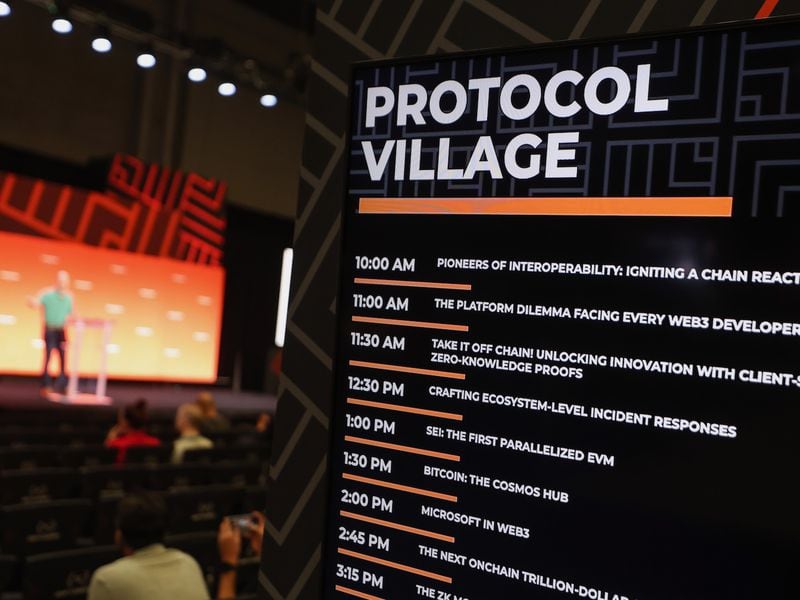The U.S. crypto exchange Coinbase’s layer-2 chain, Base, has enabled fault proofs on the main network, “marking a key milestone on our path to decentralization.” The announcement comes four months after Optimism — the layer-2 blockchain upon which Base’s technology is built — added fault proofs, a core feature at the heart of so-called optimistic rollups. According to a blog post from Base: “Fault proofs are an essential component of going from Stage 0, in which a rollup has ‘full training wheels,’ to Stage 1, which has ‘limited training wheels.’ This year, the Base core team collaborated closely with Optimism to bring the OP Stack Fault Proof System to Base. This enables a decentralized approach to proposing and validating L2 state, and paves the way towards more community participation.” The post continued:
Fault proofs have two important capabilities to improve decentralization:
– Permissionless proposals: Fault proofs help validate the state of Base in a decentralized way, allowing any participant to propose claims about the overall state of the chain, and the legitimacy of the transactions on it. This removes reliance on a central party to prove state. Permissionless output proposals go beyond what is required for Stage 1 decentralization.
– Permissionless challenges: If a faulty or fraudulent claim is made (e.g. a malicious attempt to withdraw ETH from the bridge), anyone can challenge it within 3.5 days by running the open-source challenger software included in the OP Stack. Participants who successfully challenge a claim receive the bonds of the invalid claim, creating an economic incentive to help secure the network. This fosters community-driven accountability and control, reducing the need to trust a centralized entity for state verification. With the Fault Proof System, the presence of even a single honest challenger ensures the network will remain secure. To maintain this safeguard, the Base team will operate a challenger continuously.
Termina, the SVM-as-a-Service platform by Nitro Labs, has raised a $4 million seed funding round, led by Lemniscap. [NOTE: SVM stands for Solana Virtual Machine — the operating environment for smart contracts on the Solana blockchain.) According to the team: “Recognizing the lack of SVM infrastructure offerings across the market, Nitro Labs got to work on building Termina, with a clear mandate to scale the SVM while empowering developers to create customizable Solana-based networks optimized for performance and privacy. Currently over 20 ecosystem partners are building alongside Termina, including both Solana-native and cross-chain projects, allowing developers to deploy and manage purpose-built SVM networks quickly and efficiently.”
Deep Blue, a newly launched stablecoin issuance platform aiming at developing the industry across real world and crypto applications, announce its integration with Arbitrum, the largest EVM layer-2 scaling solution by market value. According to the team: “This combines Deep Blue’s best-in-class stablecoin issuance with Arbitrum’s powerful and innovative layer 2.”
Ika, claiming to be the fastest parallel MPC network, launched on Sui, “offering secure, interoperable solutions across multiple chains like Bitcoin, Ethereum and Solana without traditional bridging. Ika empowers Move smart contract developers and enables institutional-grade scalability and security by leveraging Sui’s Mysticeti consensus and novel 2PC-MPC cryptography. This ultra-fast MPC network powers applications such as Programmable Bitcoin, DeFi interoperability, decentralized custody, chain abstraction and secure AI guardrails.”
OKX Ventures, The Open Platform (TOP) and Folius Ventures have launched a $10 million Telegram Growth Hub to accelerate innovation on the TON blockchain and enhance Telegram’s mini-app ecosystem. According to the team: “The initiative will fund up to 10 projects focused on key areas such as user onboarding, on-chain trading features and mini-apps for gaming and entertainment that expand TON’s use cases. Selected projects will receive funding, developer resources (including OKX Connect) and mentorship. Applications are open until Nov. 29 at https://tally.so/r/mJk9R7.”
Nebra, a leading provider of zero-knowledge solutions, announced that its Universal Proof Aggregation (UPA) is live on the World Chain mainnet, delivering a first-of-its-kind scalable zk-proof solution to the network. According to the team: “Supported by the Community Grants Program Wave0 to help advance the World Network Tech Tree, NEBRA UPA introduces breakthrough efficiency in zk-proof verification tech, capable of cutting costs by over 90%. This makes privacy tech accessible, efficient, and censorship-resistant across World Chain, paving the way for more widespread, real-world adoption.”
Truflation, in partnership with Digital Asset Solutions, has launched its first-ever Meme Coin Index, offering investors a unique way to track and invest in the memecoin sector, according to the team: “This index aggregates eight leading meme coins across multiple chains, including Shiba Inu, Pepe, Dogecoin and Floki, enabling diversified exposure to a $40 billion market. Traders can now access the booming meme coin economy through a single investment, simplifying portfolio management and providing a benchmark for sector performance.”
Protocol Village is a regular feature of The Protocol, our weekly newsletter exploring the tech behind crypto, one block at a time. Sign up here to get it in your inbox every Wednesday. Project teams can submit updates here. For previous versions of Protocol Village, please go here.

